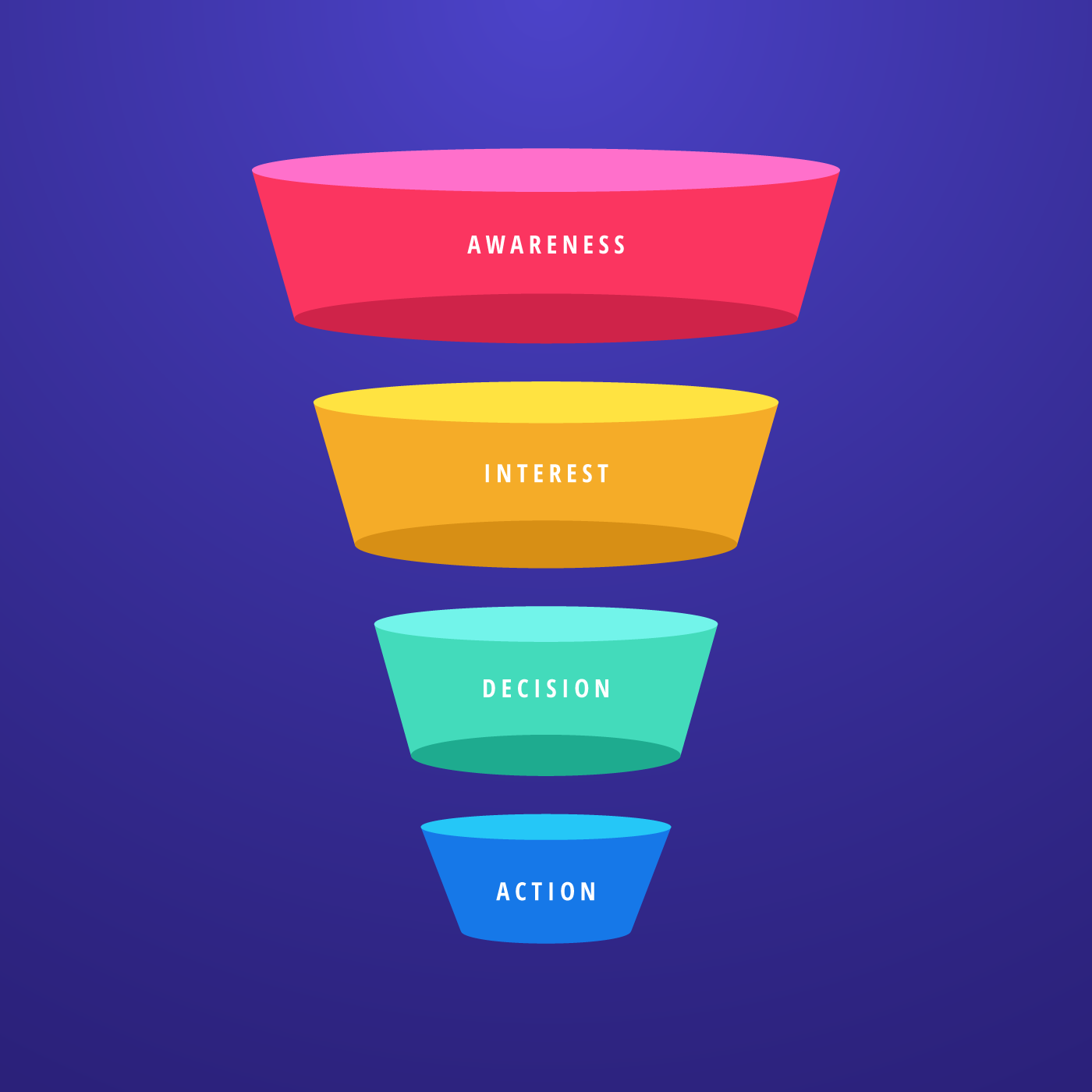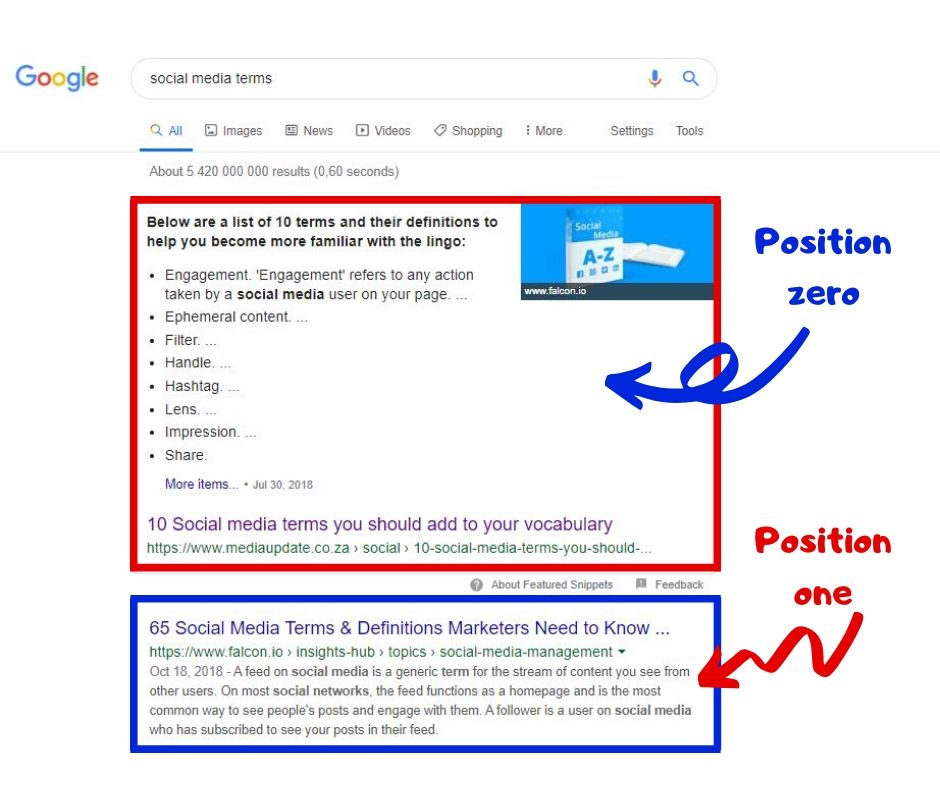media update’s Christine Beukes takes you through 10 of the marketing terms you’ll need to know in 2020.
The marketing industry is large and complex, which makes it difficult to stay up to date with new trends — nevermind new terminology! But don’t worry, we’re here to make it super easy for you.
Here’s a list of 10 marketing terms you’ll be adding to your vocab this year:
1. Above the fold
This is the content that appears just before the reader has to scroll down to see more on a website. Marketers need to be aware of the ‘fold’, or the exact position of where their content ends, so that they only place the most important information above the fold — or risk their audience clicking away!
Important things to include ‘above the fold’ (in your ad, web page social media posts, etc.) are:
- your headline
- your synopsis
- your introduction
- your main image, and
- any visuals that are important to the content.
2. Business blogging
This type of blogging combines the elements of SEO, call-to-actions and keyword optimisation, to name but a few. The whole purpose of a business blog is to write content that attracts new audiences to your website while retaining the old ones.
The content of a business blog should provide powerful insights about your brand and your industry, as well as trending topics about related industries.
The key is to keep consumers coming back for more — and hopefully, guide them down the sales funnel!
3. Contextual marketing
This is a marketing model that shows audiences targeted advertisements based on their Internet preferences. Basically, this type of marketing will only show ads to you that relate to your past searches on the Internet.
So, if you were searching for a new marketing course, for example, don’t be surprised if you start seeing some ads for courses at Udemy.
4. Demand generation
No, we’re not talking about Gen Z … This is when your brand drives demand for, or interest in, your product via marketing initiatives at various touchpoints.
The objective of demand generation is to create long-term relationships with consumers by creating awareness about your brand’s products or services through targeted campaigns.
You want to get your marketing to the point where consumers demand more products from your brand, without you having to market it to them.
It is a step-by-step process, so marketers need to create a demand generation strategy for the long-term.
5. Flywheel
This is when your brand puts its existing customers at the centre of its strategy. These customers are the ones that always return, which means they are happy with your brand’s products or services. And it’s through these customers that you get more referrals.
The objective of a flywheel is to formulate a marketing strategy that works and that keeps your customers satisfied for a long period of time before you need to go back and revise it.
6. Funnel
Despite the introduction of the flywheel, marketers still need the sales funnel in order to draw in customers in the first place. There are three parts of the sales funnel: The top, middle and bottom.
Top of the funnel
The top of the funnel refers to the beginning stages of the buying process where you are making your customers realise that they have a problem, and the solution could be your product.
Middle of the funnel
This is when your customers have realised that they do, indeed, have a problem and are looking for products like yours to solve it, which means they are actively searching for products or services that your brand has to offer.
It is critical at this point to promote your product in a way that assures them that your product is the best solution and that they proceed to the next stage of the funnel.
Bottom of the funnel
At this stage of the funnel, buyers have made up their minds; they’ve done their research, they’ve identified a solution and they are ready to make a purchase.
 Image sourced from Vecteezy
Image sourced from Vecteezy
7. Net Promoter Score
This is a metric used to determine the likelihood of a customer recommending your product or service to someone else. The metric follows a rating system from one to 10.
The scores are gathered by brands doing a brief survey at the end of purchase to see whether or not they like your product and your service, and would encourage others to use your brand.
The score can be calculated by looking at the ‘Detractors’, ‘Passives’ and ‘Promoters’. Detractors are the people that scored anything below six. Passives are people who scored between 7 and 8, and Promoters are people who give a score of 9 and 10.
According to Survey Monkey, the formula to use in order to reach a total score is:
(Number of Promoters — Number of Detractors) / (Number of Respondents) x 100
8. Responsive design
This refers to a website design that has been programmed to adapt to the device being used to view it.
How does it work? The responsive design recognises the device being used by the consumer and immediately changes to fit that specific device’s screen.
And with more consumers viewing web pages on their mobile, it is easy to see why more websites need to move over to responsive design.
#DidYouKnow? media update’s website was built using responsive design. So regardless of what device you’re using to read this article, you’re getting an experience optimised for your device!
9. SERP
SERP stands for search engine results page and is usually in reference to where your content is placed on Google. Previously, it was everyone’s goal to be number one on the search results page, but now everyone wants to move over to position zero.
Position zero is the bit of text that appears when you search for something on Google. It is also referred to as an ‘answer box’ as the text is enclosed in a small box with a do-follow link that shows users where the information came from.

10. Thank you page
This is the page that pops up once someone has performed a particular action on your website, such as buying something or signing up to your newsletter.
For example, when you buy a particular item of clothing, you might be redirected to a page that says ‘Thank you for making a purchase!’.
This page is the best way to track your return on investment, which is especially important if you are in the business of e-commerce.
Are there any important terms we might have missed? Let us know in the comment section below.
We see you’ve enjoyed our content right until the end. To get more insightful stories, sign up for our newsletter.
*Image courtesy of Vecteezy